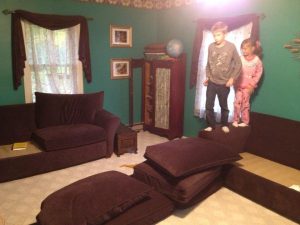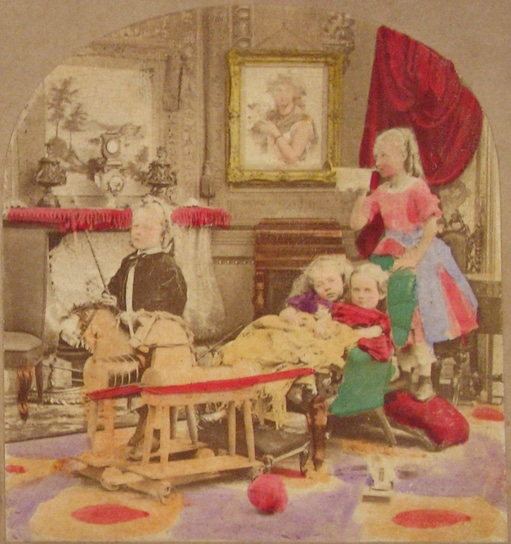 Make-believe makes a big difference. Children’s pretend play equips them for real life, write Julie A. Fiorelli and Sandra W. Russ in their 2012 article for the American Journal of Play. Fantasy play is essential to children’s health and welfare, affirms Vivian Gussin Paley in another Journal issue. Traveling through time and space, assuming imaginary identities, transforming real objects into dramatic props, and developing rules to govern these activities is not just a frivolous pastime. And kids will do it whether adults endorse it or not—just look at the furniture in your own living room. Did you know that sofa was a safe haven amidst the molten lava?
Make-believe makes a big difference. Children’s pretend play equips them for real life, write Julie A. Fiorelli and Sandra W. Russ in their 2012 article for the American Journal of Play. Fantasy play is essential to children’s health and welfare, affirms Vivian Gussin Paley in another Journal issue. Traveling through time and space, assuming imaginary identities, transforming real objects into dramatic props, and developing rules to govern these activities is not just a frivolous pastime. And kids will do it whether adults endorse it or not—just look at the furniture in your own living room. Did you know that sofa was a safe haven amidst the molten lava?
 Whether the couch cushions represent stepping stones among volcanic hazards, a gangplank high above the choppy sea, or a pilot’s seat aboard a plane, children improvise with the materials at hand. The transformation is extraordinary: kids employ physical and social engineering to renovate familiar spaces, develop their laws, and negotiate with each other to enforce them. They even adapt to changing circumstances—say, when baby brother crawls through the lava and the game becomes Loch Ness Monster.
Whether the couch cushions represent stepping stones among volcanic hazards, a gangplank high above the choppy sea, or a pilot’s seat aboard a plane, children improvise with the materials at hand. The transformation is extraordinary: kids employ physical and social engineering to renovate familiar spaces, develop their laws, and negotiate with each other to enforce them. They even adapt to changing circumstances—say, when baby brother crawls through the lava and the game becomes Loch Ness Monster.
If unstructured play is the domain of happy, healthy children, as Fiorelli, Russ, and Paley suggest, how do we encourage and protect it? We can start by sharing play memories with the kids in our lives—and looking the other way when our living rooms host the occasional geological phenomenon. Much like molten lava, free play is beautiful and completely beyond our control.



